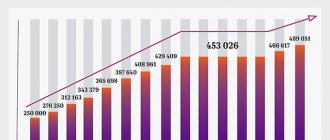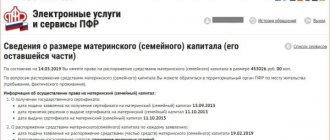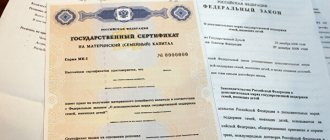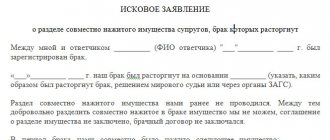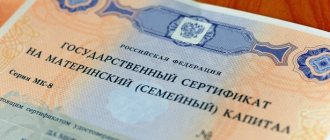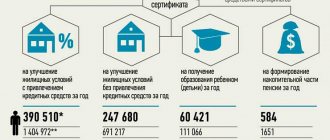- home
- Reference
- Maternal capital
Families with a second child can count not only on standard federal maternity capital, but also on certain support measures from the regional government.
For this purpose, a regional maternity capital is assigned, and its size and registration rules differ significantly in different regions. Some cities offer a large sum that can be used exclusively for the purchase of housing, while others allow it to be used to pay for the education of minors.
The concept of regional maternity capital
It is represented by a local program necessary to support citizens with small children. Regional budget funds are used to allocate it. Payments may be indexed or not change over time, as the demographic situation of each city is taken into account.
Attention! When calculating the indicator, the minimum wage, the level of well-being of the region, as well as other economic indicators are taken into account.
Large sums are offered by the authorities of large cities with low birth rates. In some regions the program is not used at all, and this is due to a favorable demographic situation.
For example, in Moscow the program was closed back in 2020. The federal government cannot change the conditions for receiving or the amount of maternity capital, since the basic rules are regulated by regional legislation.
It is also useful to read: Registration of a certificate of the balance of funds from maternity capital through State Services
Demographic situation in the region
Moscow is the most populated city not only in Russia, but also in Europe. According to official data from Rosstat, as of January 1, 2020, the population of Moscow is 12 million 381 thousand people . And this figure is growing from year to year. birth rate is also rising . In 2020, over the past 17 years, it reached its peak - 145.3 thousand children (or 11.7 people / 1000 inhabitants).
The birth rate in the capital has always been high. At the same time, most of her families still stop at one child. Thus, the introduction of the maternity capital program did not greatly affect this indicator.
Despite the increase in the birth rate, mortality in Moscow is still high, and therefore there has been a natural decline for many years. A sharp decrease was observed in 2011, and since then this figure has not changed significantly (in 2020 this figure was 123.8 thousand people , or 9.9 people / 100). Therefore, over the past six years, the capital has seen natural population growth (birth rates exceed deaths).
How is it different from federal
The main differences between regional maternity capital and federal support measures include:
- money is used from the budget of a constituent entity of the Russian Federation;
- federal maternity capital is offered to residents of all cities, and a single amount is offered, but in the regional program the amount differs significantly, as it varies from 25 to 700 thousand rubles;
- funds are usually issued 3 years after the birth of the baby, but sometimes money is provided much earlier, for example, if citizens have a mortgage;
- Typically, the assistance measure is offered only to families in which the 3rd or 4th child appears, and adoptive parents can also count on the amount.
Reference! The certificate is issued once, so even if another baby appears in the family, this will not be the basis for receiving the payment again.
Destination Features
The right to regional maternity capital is confirmed by receiving a special certificate from social protection. Documentation is issued only to persons who are Russian citizens.
The registration process has some nuances:
- This support measure is formalized in the social security department of each region;
- it is allowed to send documents to receive maternity capital by mail, as well as bring them in person or through an official representative;
- it is allowed to submit documents for a certificate through the State Services portal or contact an intermediary represented by the MFC;
- There are no restrictions on the processing time, so you don’t have to contact the social security department immediately after giving birth.
To obtain a certificate, the following documents are prepared:
- mother's passport;
- if a representative is involved in the procedure, then his passport and a notarized power of attorney are required;
- birth certificates of children raised in a family;
- if the children are adopted, a court decision is required;
- documents proving the Russian citizenship of the applicant and children;
- SNILS;
- application for maternity capital.
During the process of filling out the application, the mother’s personal data, passport data, citizenship and information about the children are indicated. Regional capital is offered in addition to the federal certificate, so when several payments are combined, it becomes possible to buy real estate.
Important! If a woman dies before the certificate is issued, then the father can handle the process, but the woman’s death certificate is attached to the package of documents.
Program operation
Federal maternal (family, as it is issued for one person, but for the needs of the whole family) capital is a program that has been running since January 1, 2007 and has now been extended until December 31, 2020. Money in the amount of 453,026 rubles. citizens can receive in the event of the birth (adoption) of a second, third and subsequent child. You can use the benefit only once, having received a special certificate (cash is not used) to pay for family needs provided for by law.
The regional maternity capital program began operating in most republics and regions (it was not and is not in Moscow) in January 2011 as a supplement to the federal one. The authorities of each region independently, based on their capabilities and even national characteristics, determine the amount and terms of payments. The most common option is a certificate with a face value of 100,000 rubles for the birth of a third child.
In the period from April 2011 to December 31, 2016, in the Moscow region, along with the federal maternity capital program, there was also a regional program, similar in name, but slightly different in essence. It worked on the basis of the provisions of the regional law “On measures of social support for families and children in the Moscow region” and provided for the payment of benefits in the amount of 100,000 rubles to citizens who had a second child.
This program has been suspended since 2020. Firstly, in Moscow, with a roughly similar set of social benefits, there is no such preference. Secondly, experts do not associate the improvement in the demographic situation in the region (since 2005 there has been an increase in the birth rate and natural population growth) with regional capital.
Children born after December 31, 2016 are not eligible for this program. Those who were lucky enough to be born before this date, and accordingly their families, remain within the framework of the project, which provides for payments of regional maternity capital. Inflation does not work in favor of assistance in the amount of 100,000 rubles, and its indexation, unlike the federal benefit, has never been carried out. Therefore, it is worth recalling the main provisions of the program and focusing on legal ways of using funds.
What can you use it for?
Regional maternity capital is issued based on the requirements of local legislation, therefore the purposes of its use differ in different cities.
Typically, money can be used for the following purposes:
- improvement of living conditions, for which real estate is purchased or built;
- payment for children's education;
- purchasing funds for the rehabilitation of disabled children.
In some regions, the number of spending destinations is significantly increasing. For example:
- you can not only build, but also renovate housing,
- buy a plot of land to build a summer house,
- pay for clubs and sections for children,
- buy a car or household appliances,
- bring utilities to the house
- pay for paid medical services.
In the Samara region you can pay off a loan, and in the Perm region you are allowed to use the money for recreation and recovery.
Children's education
Parents often use regional maternity capital to pay for their children’s education.
In this case, the money can be used for the following purposes:
- visiting a kindergarten, not only a public one, but also a paid one;
- accommodation in a dormitory while studying at a university;
- payment for education in different educational institutions;
- visiting clubs or sections.
Attention! The main condition for using maternity capital funds is that the selected educational institution must be located on the territory of the Russian Federation.
In some regions, it is allowed to use budget funds to purchase a car, but only a domestic vehicle is selected. Since 2020, citizens can receive a monthly payment if their income is less than the subsistence level. Therefore, corresponding changes were made to regional programs.
Funds issued on the basis of regional maternity capital are not provided in the form of cash, and therefore are transferred to other organizations, for example, contracting firms, banks or medical institutions. If citizens use any illegal methods to cash out money, they are held accountable for fraud, and also return previously received funds.
It is also useful to read: Is maternity capital required if the child dies?
Improving living conditions
This method of using regional capital is chosen by citizens most often. With the help of budget funds, people solve their housing problems.
Money can be used for:
- purchasing an apartment located on the secondary or primary market;
- mortgage registration;
- reconstruction of a private house;
- construction of a residential facility;
- purchasing a home.
Difficulties often arise when purchasing real estate, as sellers sometimes refuse to receive payment based on the certificate. To solve this problem, you can take out a mortgage loan, which, after the transaction is concluded, is repaid with maternal capital.
Reference! Many large banks work with maternity capital, so the certificate can easily be used to partially or fully repay a target loan.
If the money is used to build a house, it is issued in two stages. The first half of the funds is allocated for the construction of the foundation, and the balance is transferred six months after providing evidence of construction. The land on which the house is built must be the property of the family.
If a private building is classified as emergency real estate, then funds from the regional capital can be used for reconstruction , for which the load-bearing structures are replaced, the floor is completed, or the technical characteristics are changed.
How to obtain a certificate for regional family capital - conditions and step-by-step instructions
Basically, the conditions for obtaining a regional certificate are similar to those for issuing a “regular” document for the right to dispose of public funds.
Those who have a legal right to it do not face any particular difficulties in obtaining a certificate. The document is drawn up in the regional branches of social protection authorities.
Mothers do not necessarily have to run to this organization immediately after giving birth. There is no time limit for document processing. The presence of a trusted person, rather than the parent himself, is also allowed. In this matter, the authorities are meeting the families halfway.
Below are step-by-step instructions for obtaining a certificate.
Step 1. Collecting documents
If parents have already received federal matrimonial capital after the birth of their second child, they should know what documents are needed to obtain the certificate.
The list contains the following items:
- Applicant's passport.
- Birth certificates of all children in the family.
- Certificate of adoption (if applicable).
- Insurance pension certificate.
It is allowed to provide documents in the form of copies, since the issuance of a certificate takes about a month. Residents of remote villages can send documents by mail.
On our website there is a detailed article on how to apply for maternity capital.
Step 2. Submitting an application
The application is drawn up in accordance with the established form. It is important to provide complete and reliable information regarding family composition, place of residence and registration, and the applicant’s status.
The application is submitted along with copies of documents. The signatures on the application must belong directly to the person to whom the personal certificate is issued.
Step 3. Waiting for a decision and receiving a certificate
Verifying the authenticity of documents and facts provided by the applicant takes an average of 3-4 weeks.
During this time, the fund’s employees are required to check whether the applicant has been held accountable for unlawful acts against the child, or whether parental rights have been deprived. Information about other data provided in the application is also checked.
In accordance with the results of the inspection, employees make a decision on issuing a certificate. You need to understand that the document itself only provides the right to dispose of regional funds, but does not imply receiving cash.
Table for issuing regional maternity capital by region
Each region issues its own certificates, which differ in the amount provided, registration rules and possibilities for using the funds.
| Region of Russia | Amount issued (thousand rubles) | Terms of use |
| Moscow | 100 | Buying a home and paying for children's education |
| Murmansk | 121 | Purchasing real estate, educating minors, paying for medical services and restoring children’s health |
| Nizhny Novgorod | 25 for 2 children and 100 thousand rubles. on the third | Payment for education, purchase of a residential property, installation of utilities to the house, purchase of goods for the social adaptation of disabled people and payment for medical services |
| Sakhalinskaya | 204 for 2 children and 150 thousand rubles. women who gave birth to a child before 25 years of age | Purchasing housing, paying for education and medical care, as well as expenses related to the rehabilitation of disabled children |
| North Ossetia | 50 | For any personal needs |
| Ulyanovskaya | 50 for the 2nd child and 100 for the 3rd, 150 for the 4th and 200 for the fifth | Education of children and purchase of housing, payment of insurance, medical services or organization of recreation for children |
Additionally, cities offer various support measures when a third child appears. For example, in the Altai Territory, 55 thousand rubles are offered, and the authorities of the Amur region provide 100 thousand rubles. In the Belgorod region, 55 thousand rubles are issued, and in the Volgograd region - 70 thousand rubles. These funds are usually offered for the personal needs of citizens.
At the birth of the 4th or subsequent children, in some cities another measure of material support is provided . In the Altai Republic, 50 thousand rubles are issued, and in Karachay-Cherkessia the amount increases to 105 thousand rubles.
Conditions for obtaining a regional MK

In each region, the conditions of maternity capital are different. But we were able to highlight the main ones:
- The third (in some cases the second) or subsequent child must be born during the period of validity of the law on regional support for families with children.
- The family must live in the region for a certain amount of time (usually at least a year).
- The average amount of payments by region is 100-130 thousand rubles.
- The certificate can be used after the specified time has expired (mainly after the child reaches three years of age).
